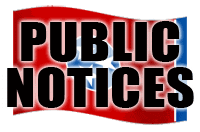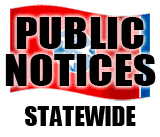When your stream is uneven, you must deal with some distinct financial issues. Besides cash flow, what do you do about your tax strategy? How should you try to save? If you are self-employed, what about health coverage?
Budgeting. One significant financial detail in your life probably won't fluctuate - the amount of money that you need to live on per month. A detailed monthly budget is essential. Maybe you need (or want) to pay for 17 expenses in your life per month. In some months, you may be able to easily pay for all 17. In other months, you may be able to pay for only 12. The key is to list them in order of priority, from the crucial to frivolous. expense you can think of and rank them in order. Arranging automated bill paying may be useful if you are looking at several fixed monthly debts you will have for the long run.
Managing taxes. Sans withholding, you must be disciplined. If you are self-employed and your income is predictable, you can estimate taxes and arrange quarterly payments to the IRS (take a look at Form 1040-ES, Estimated Tax for Individuals.) For the record, the IRS says you don't have to make quarterly tax payments until you actually have the corresponding income.
Estimating tax becomes much tougher, however, when your income stream is inconsistent or if you the near- List every have multiple income streams. If you underestimate your quarterly payments, you must pay interest. Schedule AI of Form 2210 (found in IRS Publication 505) can be a great help here - as complex as it appears, it is a solid way to document and calculate estimated quarterly payments when your income fluctuates. (If you are a self-employed fisherman or farmer, special rules apply.)
Legions of freelancers neglect to set money aside for taxes. It might be wise to set up a savings account dedicated to that purpose, so you don't have hassles come April.
Managing savings. Saving when your income rises and falls is challenging, but not impossible. After you meet your expenses in a particular month, there may be little or nothing left - but you have to take a little bit of the little and save it, and commit yourself to saving much more in good months.
One radical approach might help you ramp up your savings: austerity. Let's say you decide not to spend a dime on golf for six months, or eating out. Voila - more money can potentially go into your savings, or into investing.
Another, less radical approach: take $1,000 (or even $500, if the institution permits) and put it into a short-term CD. Or take $50 a month (or your bonus) and put into equity investments. Or put extra funds toward your mortgage. If your arrangement is salary + commissions, you could elect to live off your salary and invest or save your commissions if your salary permits that.
You won't have an employer-sponsored 401(k) or 403(b) plan at your disposal, but you can invest through traditional and Roth IRAs - and if the annual contribution limits seem low, you could look at creating a SEP, Solo(k) or Keogh plan for yourself.
Arranging health insurance. It isn't 2014 yet, so like many self-employed Americans you may be faced with paying three or four times the premiums for health insurance than you would as a "captive". According to Gallup, a record 17.1% of self- employed individuals lacked health insurance in 2011 - not surprising.
Still, there ways to sustain and/or arrange health coverage. If you are leaving a salaried position to go solo, COBRA can extend coverage for 18 months. About one-quarter of U.S. firms still offer some level of retiree health benefits, and roughly one-sixth extend group health benefits to part-time workers.
If you have a pre-existing condition, some states have high-risk pool programs and all states have PCIPs (pre-existing condition insurance plans) for which you might be eligible (see statehealthfacts.org for more).
You might also be able to get coverage through a family coverage option in your spouse's plan, or via a professional or trade group you have joined. Hiring an employee might allow you to qualify for a small business group plan (talk with an insurance professional to determine your options).
Do you work for yourself and pay for your health insurance? In 2012, the IRS will let you deduct 100% of the cost of those health insurance premiums from your taxable income (the deduction is not subject to the 7.5% AGI limitation). You do this on the first page of Form 1040. Notably, the IRS defines sole proprietors, partners, members of LLCs and anyone with more than a 2% share in a S-Corp whose underlying personal service activity represents a material income-producing factor as "self-employed."






